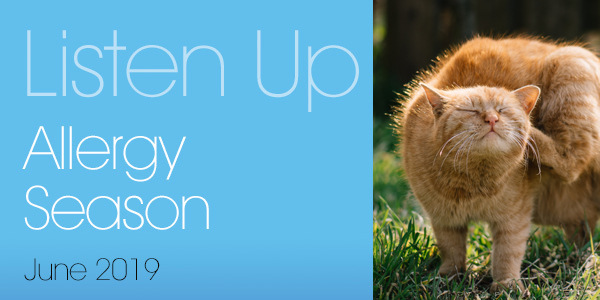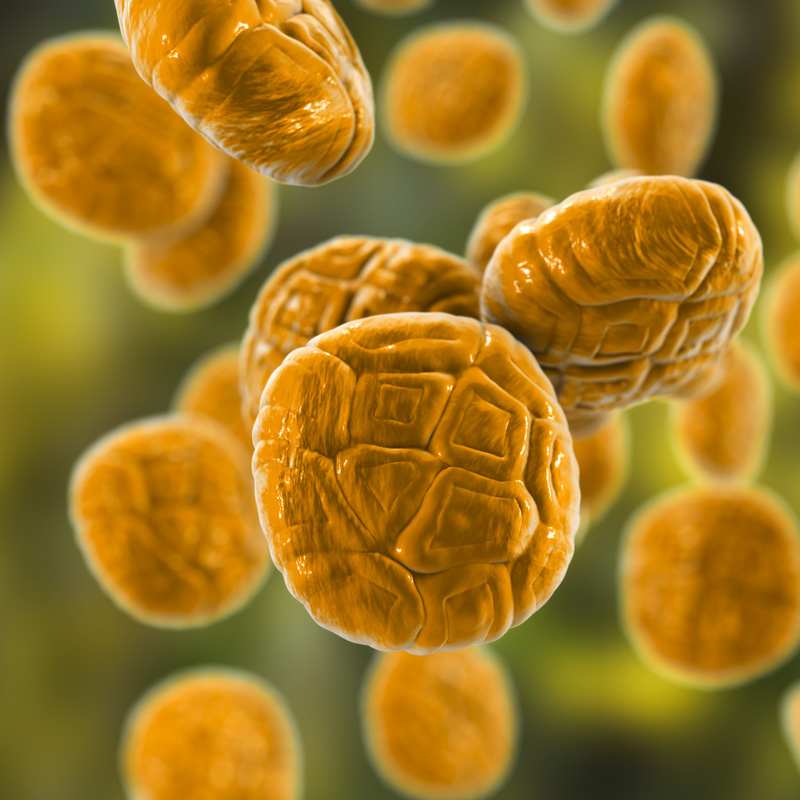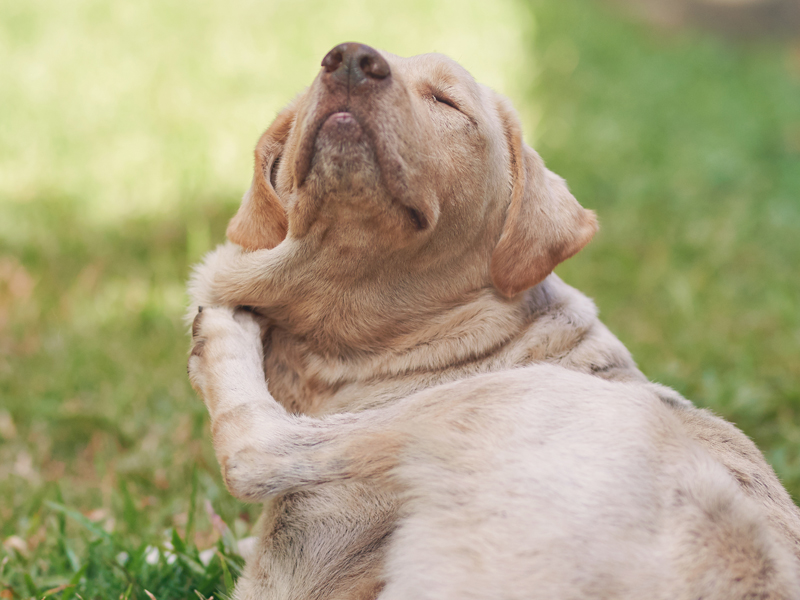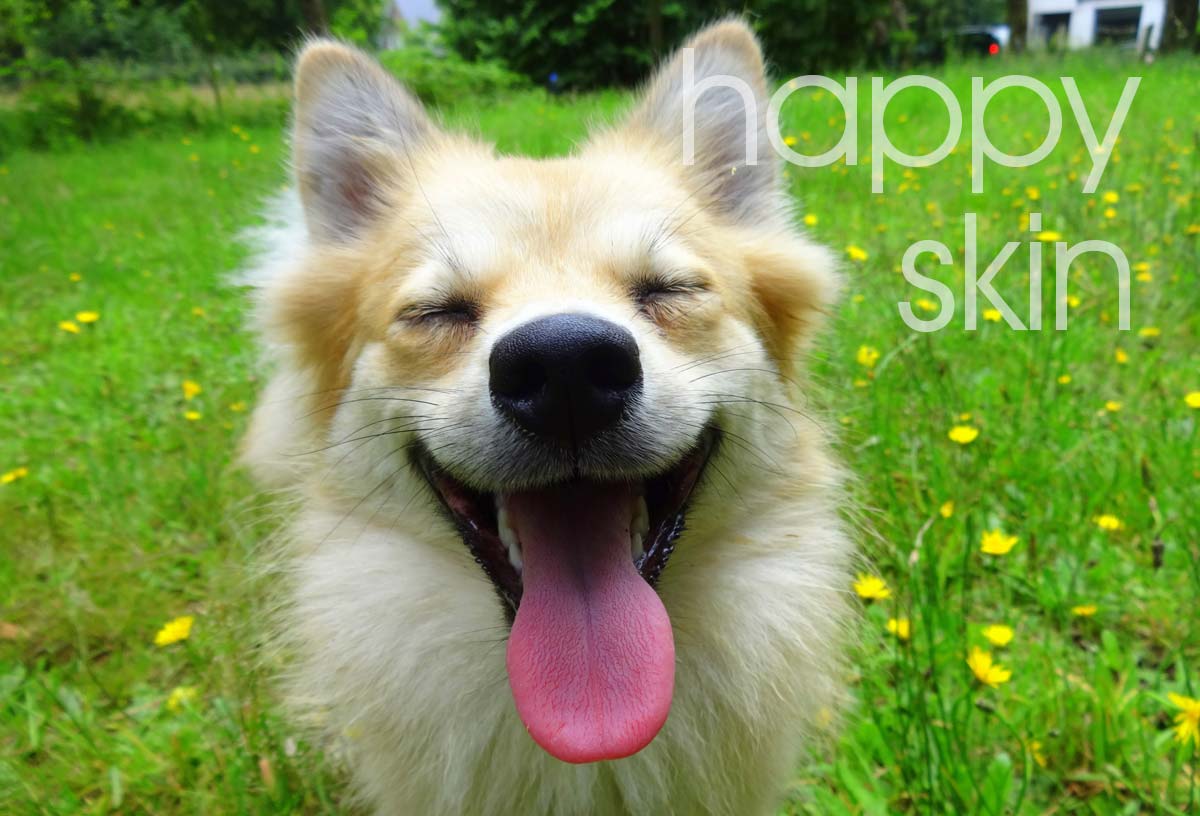


3 Ways to help your pet this allergy season
 Skin problems are unfortunately very common in our pets (estimated to affect up to 15% of dogs and cats worldwide) and they are often related to a pollen allergy.
Skin problems are unfortunately very common in our pets (estimated to affect up to 15% of dogs and cats worldwide) and they are often related to a pollen allergy.
What is pollen allergy?
Pollen is produced by grasses, trees, weeds, flowers and shrubs at varying times throughout the year (see this useful link) and it is possible for your pet to be allergic to one or more of these pollens. Like most allergens, pollen can enter the body by being inhaled, eaten or absorbed through the skin and because it is microscopic and carried readily on air currents and objects, it is impossible to avoid pollens altogether.

A Type I hypersensitivity reaction (as pollen allergy is termed) results in the release of substance called histamine from special immune cells throughout the body, called the mast cells. Histamine's role in a healthy immune system is simply to rid the body of potential threats, but in an allergic reaction histamine recognises low risks (e.g. pollen) as major threats to the body and triggers an aggressive response. It is this aggressive histamine reaction that results in the symptoms of allergy.
Allergy Signs
The signs of allergy in cats and dogs are very similar but some pets may show only mild localised symptoms whilst others will have a strong and potentially life threatening response. Pollen allergy symptoms include...
- Scratching & shaking the ears. (Sometimes to the point that the ear flap becomes traumatised and swollen. This is known as an aural haematoma and requires veterinary intervention.)
- Itching, biting & rubbing at areas of irritated skin e.g. on the face, flanks or bottom.
- Licking, nibbling or biting at the paws.
- Patches of fur loss or general coat thinning.
- Grooming frequently and excessively.
- Dry, flaky skin.
- Skin rashes & red, sore or broken skin.
- Scabs & crusts on the skin surface.
- Coughing, sneezing, difficulty breathing, runny eyes or nose.
- Vomiting or diarrhoea.
- Lethargy or restlessness.
- And many more...

How do I know if my pet has a pollen allergy?
To definitively diagnose a pollen allergy, there are skin allergy tests your pet can have under the care of a veterinary dermatologist, but many owners recognise a seasonal pattern of allergy symptoms in their pet which starts and ends in time with a particular pollen season and it is not unreasonable for them to draw the conclusion of pollen allergy in such cases, even if allergy testing has not been undertaken.
Unfortunately, many pets suffer year round with their allergies so it is not possible to say for sure what pollens if any affect them. And if your pet is allergic to substances other than or as well as pollen, the picture can be very confusing. For this reason, it is always best to seek the advice of a veterinary surgeon if you are unsure whether your pet is allergic to pollens or not.

3 Ways to Manage Pollen Allergy
As there is no cure for pollen allergy, the most any owner can do is manage the disease in the best possible way for their pet. There is no single strategy which works for every pet, so be prepared to try different things until you find the right approach for your pet. Below are some key actions you can take...
1. Treat
For many pets, their symptoms are severe enough to warrant the use of prescribed medication. Vets may suggest multiple options and will help you to balance the good effects of the medication with the inevitable side effects associated with them.
- Oral Medications
- Immunosuppressant drugs such as steroids
- Antihistamines
- Topical Medications
- Ear drops, steroid sprays & creams can help manage focal areas of skin irritation.
- Parasite treatment
- It is very important to maintain good parasite control year round as the irritation caused by a single flea bite can lead to a flare up of wider skin allergy.
- Allergy Vaccines
- These are tailored to match the specific allergies in your pet and help to reduce their reactivity to the allergens they encounter.
2. Avoid
One of the most effective but challenging ways of managing an allergy is to avoid the allergen but as we have already discussed, this is impossible with pollens. Instead there are a variety of ways to reduce the amount of pollen your pet is exposed to...
- Remove pollens from inside the house
- Hoover regularly and use a HEPA filter if you can
- Dust regularly with a damp cloth
- Wash your pet's bedding frequently
- Use an air purifier
- Prevent pollens from entering the home
- Keep windows and doors shut
- Change your clothes and shower after walks
- Shower your pet or wipe them down with a damp cloth after walks
- Leave shoes at the front door
- Keep your pet's coat short as this makes it easier to clean and remove pollens
- Don't hang clothes out to dry on a line when the pollen count is high
- Avoid pollens outdoors
- Avoid areas with known allergy plants on your walks.
- Walk your pet at times of day when the pollen count is lowest (this generally means avoiding walks in the early morning and evening and especially when the weather is warm, humid and windy).
- Watch the pollen count forecasts in your area
- Apply a small amount of Vaseline to your pet's nostrils to trap inhaled pollen grains
3. Nutrition
True food allergies are relatively rare and are thought to be responsible for only 1% of all skin disease in dogs, but feeding your pet the right supportive nutrition will help them cope with allergy season, especially if you maintain a skin supportive diet year round.
This may come in the form of a specialist skin diet or you can add a skin supplement to their current diet, especially if changing their food is not an option. Look for key nutrients like...
- Omega 3 & 6 Essential Fatty Acids which support a healthy skin barrier to keep environmental allergens out.
- Herbal extracts such as Artichoke which helps support livers that are often working hard if your pet is on medication.
- Natural antioxidants like Vitamin E and Licorice (which contains the powerful isoflavanoid glabridin) to neutralise the free radicals generated by skin inflammation.
- Building blocks to nourish skin and coat health and repair such as Zinc, Vitamins A, B & D, Biotin and Methyl sulphonyl methane (MSM).
Take home message
Pollen allergies are common and can be difficult to manage but there are lots of things you can do to make a difference to your pet's health...
Treat the symptoms and ask your vet to help you tailor your pet's allergy medication to limit the side effects.
Avoid the allergens as best you can. Remember every little helps.
Nutrition plays a key role in maintaining skin health and allergy support. Reach for a skin supplement and/or a skin diet to help.
If you have any questions regarding your pet's allergies, please do not hesitate to get in touch with us info@naturalvetcare.com or 0800 1585 332.

REFERENCES
Saridomichelakis MN, Olivry T. (2016) An update on the treatment of canine atopic dermatitis. Veterinary Journal. 207 29-37.
Olivry T, Mueller RS. (2017) Critically appraised topic on adverse food reactions of companion animals (3): prevalence of cutaneous adverse food reactions in dogs and cats. BMC Vet Research 13(1): 51
Hillier A, Griffin CE (2001) The ACVD task force on canine atopic dermatitis (I): incidence and prevalence. Vet Immunol Immunopathol. Sep 20; 81(3-4):147-51.
CONTACT
Copyright © Natural VetCare 2019
Security & Privacy | Cookies | Terms & Conditions





